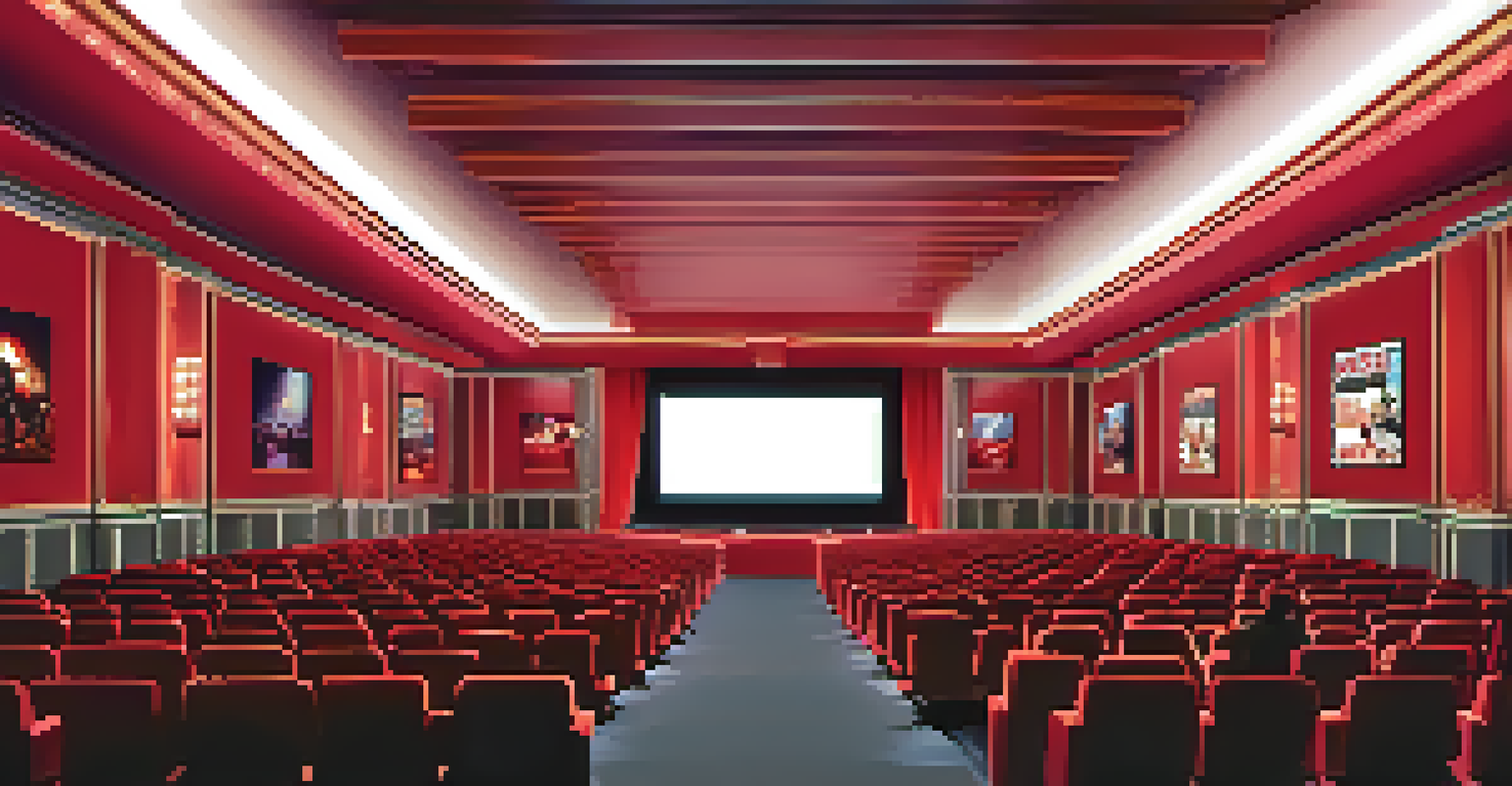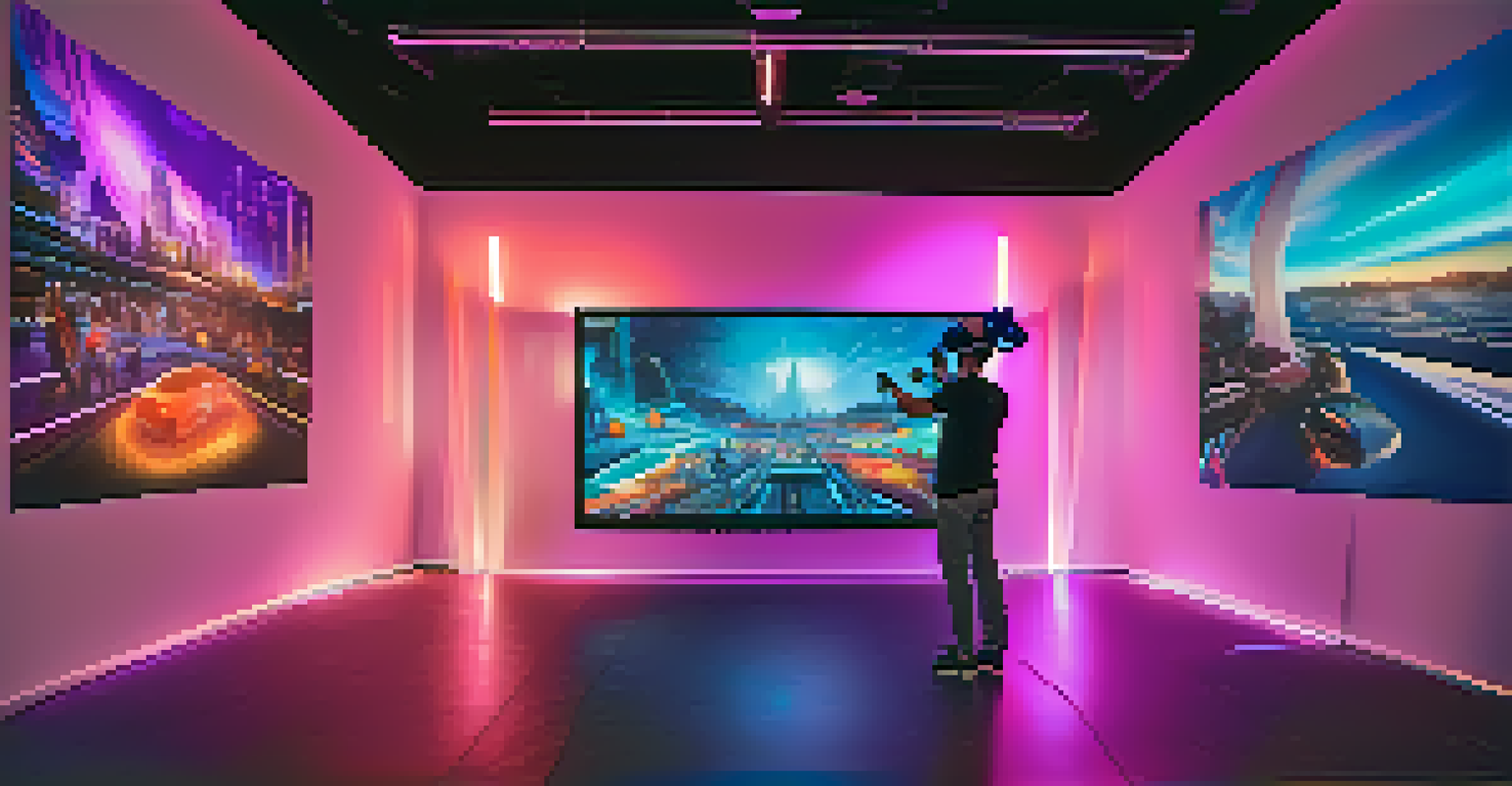Technology's Role in Revolutionizing the Global Box Office

The Rise of Digital Streaming Platforms
In recent years, digital streaming platforms like Netflix and Hulu have changed the way audiences consume films. With just a few clicks, viewers can access a vast library of movies from the comfort of their homes. This shift not only creates new viewing habits but also impacts traditional box office revenues. As a result, theaters are adapting to this new competition by offering unique experiences to entice moviegoers back.
The future of cinema is not in the theaters but in the homes of the audience, with streaming services leading the charge.
Streaming services also create opportunities for filmmakers to reach wider audiences without being limited by theater distribution. Independent films, which might have struggled to find a theater home, can now find success on platforms like Amazon Prime. This democratization of film distribution highlights how technology is breaking down barriers and expanding the global box office.
Moreover, these platforms often provide valuable analytics on viewer preferences, helping studios tailor their marketing strategies. Understanding what audiences want allows for more targeted campaigns, ultimately increasing the chances of a film's success. Technology, therefore, is not just changing how we watch films, but also how they are made and marketed.
Virtual Reality: A New Dimension of Viewing
Virtual reality (VR) is pushing the boundaries of traditional cinema experiences by immersing viewers in a 360-degree environment. Imagine watching a horror film not just on a screen but feeling as if you're part of the story, heightening the suspense and thrill. This innovative approach is attracting a new generation of film enthusiasts eager for unique experiences, thus influencing box office trends.

VR isn't just limited to entertainment; it's also used for marketing films in engaging ways. For instance, studios can create VR experiences that allow fans to step into the world of their favorite movies, generating buzz and excitement before release. This kind of interactive marketing can translate into increased ticket sales as audiences feel more connected to the film.
Streaming Platforms Change Viewing Habits
Digital streaming platforms like Netflix and Hulu have revolutionized film consumption, impacting traditional box office revenues and expanding access for filmmakers.
As VR technology becomes more accessible, it has the potential to revolutionize how stories are told and experienced. With filmmakers embracing this medium, the box office could see an uptick in attendance as more people seek out these novel experiences. In this way, technology is not only transforming the viewing experience but also redefining audience engagement.
The Impact of Social Media on Film Promotion
Social media platforms like Instagram, Twitter, and TikTok have become essential tools for promoting films, influencing box office performance. By leveraging these channels, studios can create buzz, engage with fans, and share trailers or behind-the-scenes content. This real-time interaction fosters a sense of community and excitement around upcoming releases, leading to increased interest and ticket sales.
Technology has the power to connect us all, breaking down barriers and allowing stories to resonate across cultures.
Moreover, social media allows for grassroots marketing campaigns that can go viral, often leading to unexpected box office hits. Think of how a quirky trailer or a meme can quickly capture the attention of millions. This organic reach can significantly boost a film's visibility and success, demonstrating how technology reshapes marketing strategies in the film industry.
As audiences spend more time on social networks, engaging content shared by influencers and fans can greatly impact a film's box office performance. With technology facilitating these connections, studios are increasingly recognizing the importance of an effective social media strategy to maximize their films' potential.
Data Analytics: Understanding Audience Preferences
In the age of big data, analytics is playing a crucial role in shaping the film industry. Studios can now gather insights on audience preferences, viewing habits, and even demographics to inform their production and marketing decisions. This data-driven approach allows for smarter investments and targeted strategies that can lead to higher box office returns.
For instance, analyzing trends from previous films can help studios identify which genres resonate most with certain demographics. This means they can tailor their releases to meet audience expectations, increasing the likelihood of box office success. Additionally, predictive analytics can forecast potential hits before they even hit theaters, enabling studios to allocate resources more effectively.
Social Media Drives Film Promotions
Social media platforms are essential for film promotion, allowing studios to engage audiences and create viral marketing campaigns that boost box office performance.
Ultimately, the use of data analytics in filmmaking represents a shift towards a more informed and strategic approach to the industry. By harnessing technology, studios can make decisions backed by real evidence, thereby enhancing their chances of achieving box office success and meeting audience demands.
Enhanced Viewing Experiences in Theaters
As competition from home viewing increases, theaters are investing in enhanced viewing experiences to attract audiences. Luxury seating, improved sound systems, and high-definition screens are just a few examples of how technology is elevating the cinema experience. By creating a more comfortable and immersive environment, theaters are encouraging moviegoers to choose the big screen over their living rooms.
Additionally, some theaters are experimenting with 4D technology, which combines visual and sensory experiences like motion, scent, and even wind. This multi-sensory approach can transform a standard movie into an unforgettable adventure, appealing to families and thrill-seekers alike. Such innovations not only improve the viewing experience but can also drive box office sales as audiences seek out these unique outings.
Furthermore, the rise of online ticketing and reserved seating has simplified the process for moviegoers. With just a few clicks, audiences can secure their preferred seats and avoid long lines, making the cinema experience more convenient. Technology is thus not only enhancing the way films are experienced in theaters but also streamlining the overall process, encouraging more frequent visits.
Global Box Office: The Influence of Technology
Technology has enabled a more interconnected global box office, allowing films to reach audiences worldwide. With digital distribution, films can now premiere simultaneously in multiple countries, increasing their potential revenue. This globalization of the box office means that a hit in one region can quickly become a global phenomenon, reshaping how studios approach marketing and distribution.
Moreover, the rise of international co-productions is becoming more common as studios seek to tap into emerging markets. By collaborating with local filmmakers and understanding cultural nuances, studios can create films that resonate with diverse audiences. This strategy not only boosts box office performance but also enriches the storytelling landscape with varied perspectives.
Data Analytics Shapes Film Strategies
The use of data analytics enables studios to better understand audience preferences and optimize their marketing and production strategies for greater box office success.
The accessibility of technology has also empowered international filmmakers to share their stories on a global stage. For instance, films from countries once considered niche markets are now gaining significant traction worldwide. This diversification of content broadens the scope of what audiences can enjoy, ultimately enriching the global box office landscape.
The Future of Cinema: Technology's Ongoing Evolution
As technology continues to advance, the future of cinema looks promising, with new innovations on the horizon. From augmented reality (AR) experiences to artificial intelligence (AI) in filmmaking, the possibilities are endless. These technologies will not only enhance how films are made and marketed but may also transform the entire viewing experience.
For example, AI is already being used to analyze scripts and predict box office success, allowing studios to make data-driven decisions. This could lead to more tailored content that aligns with audience preferences, ultimately improving box office outcomes. Furthermore, as AR technology becomes more mainstream, we may see interactive films where audiences can influence the storyline, creating a unique viewing experience.

Ultimately, the ongoing evolution of technology will continue to shape the film industry in profound ways. As filmmakers and studios embrace these advancements, audiences can expect a more dynamic and engaging cinema experience that keeps them coming back to theaters. The relationship between technology and the box office is poised to remain a vital aspect of how we enjoy films in the future.